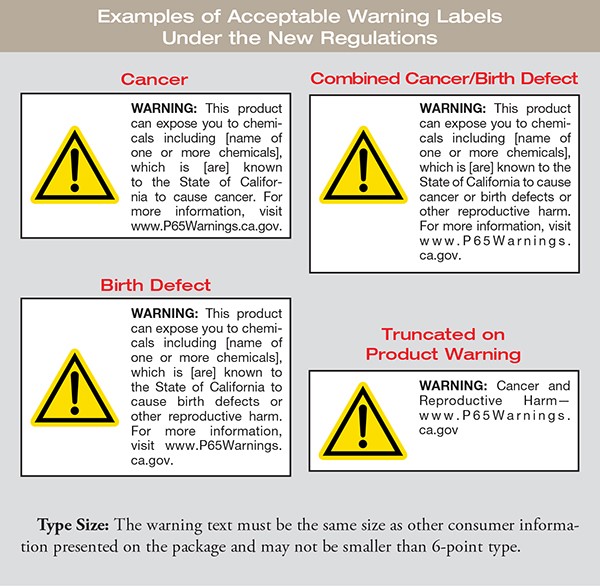Electronics Supply Chain Faces New California Proposition 65 Warning Requirements and Litigation Risks
Submitted by: ECIA
As the August 30th deadline for new California Proposition 65 Labeling and Warning Requirements draws near, electronic component manufacturers, and distributors should carefully consider risks and develop appropriate compliance plans.
The original Proposition 65 Safe Water and Toxic Enforcement Act was passed by California ballot in 1986 in the interest of protecting consumers from substances that cause cancer and reproductive harm. Since then over 900 substances have been identified by the California OEHHA (Office of Environmental Health Hazard Assessment) as a risk to public health, and the list grows with annual updates.
A trip to any retail store in the country will give you a view of how far reaching the effects of this State of California Prop 65 law has been. California Prop 65 Warnings can be found on power cords, surge protectors, lighting products, golf clubs, fishing sinkers, bicycles, wood products and many other common products. Within the State of California, Prop 65 Warning signs now appear in coffee shops, liquor stores, marijuana dispensaries, gas stations, retail stores, amusement parks, parking garages and more.
The Prop 65 law has engendered a substantial increase in litigation among the tort bar in California. Prop 65 has simple claim requirements and shifts the burden of proof to defending companies. Over $25 million in settlements were awarded in 2017 and litigation is on a pace to nearly double that in 2018, and that’s before new tougher Labeling and Warning requirements approved in 2016 go into effect on products manufactured after August 30th and sold in California.
So, why should the electronics industry be concerned? Within the list of over 900 substances on the current OEHHA list there are estimated to be over 100 found in electronic components and products.
Components or products available to consumers or exposed to workers in California must be labeled if those products contain any of the listed substances and exceed “safe harbor” levels, which are defined by the OEHHA with complex and technical exposure criteria.
Proposition 65 Warning label formats and content are quite specific:

There are also specific warning requirements that apply to Internet and catalog sales.
Warning responsibilities begin with component manufacturers and extend to distributors, OEMs, online merchants and retailers. Violations often ensnare everyone in that supply chain, and at that point you bring in the lawyers and the toxicologists, and the costs mount whether you win or not. A sound risk management strategy should focus on claim prevention, not simply claim defense.
As the litigators target opportunities, they look for products containing listed substances, noncompliant labels or warnings, and companies with deep pockets. They do not have to prove damages, just label or warning violations. You can settle, you can fight, but either way it will be expensive.
The ECIA GIPC (Global Industry Practices Council) and their Environmental SMEG (Subject Matter Expert Group) have been looking into this issue. A recent survey of ECIA members found that current written positions may not fully reflect the requirements of the law, or the substance list, or the required toxicology data.
Customers are asking for Proposition 65 compliance information. Manufacturers are advised to become familiar with the Proposition 65 law, identify if P65 listed substances are in their products, develop compliance position statements, and provide Prop 65 compliant notifications and warning labels if appropriate.
Distributors are advised to survey their supplier base for Proposition 65 compliance information and be prepared to pass Prop 65 warnings to customers prior to sale and provide P65 warning labels on products as required.
If you have any questions, please contact Don Elario at [email protected].
The links below are designed as a member resource for the latest information on California Proposition 65. Only members can view the content.


